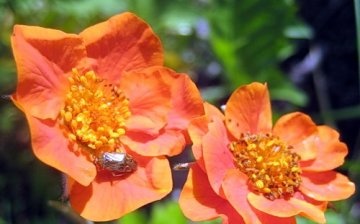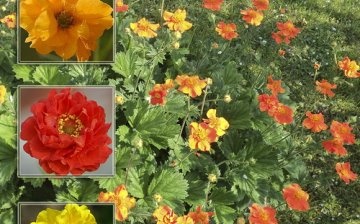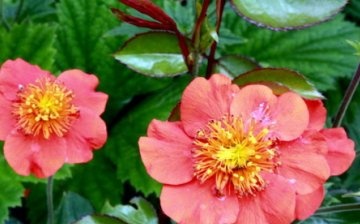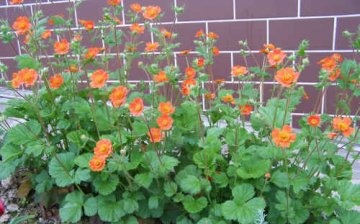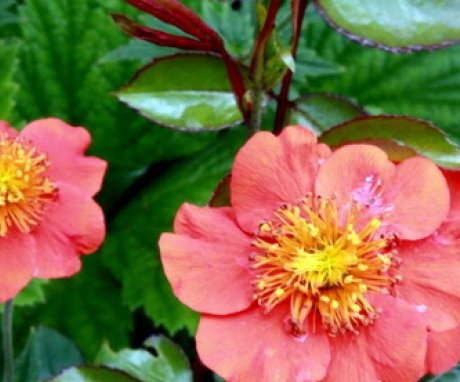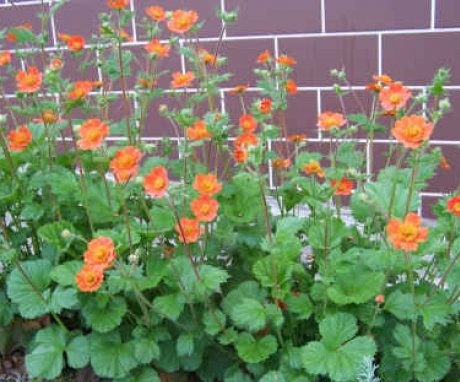Chilean gravilat - secrets of successful cultivation
One of the worthy decorations of your infield, of course, can be a plant with an intricate name. avens Chilean. This handsome man looks original when decorating borders, flower beds and rock gardens. Also, the plant feels great near reservoirs, so it can be used to decorate ponds and areas near the stream. In the bouquet, the gravilat also looks very elegant.
Content:
- History and features of the Chilean gravilat
- Cultivation and reproduction of Chilean gravilata
- Conditions for growing Chilean gravilat
History and features of the Chilean gravilat
As a culture, gravilat has been cultivated since 1824. It is customary for us to grow Chilean gravilat as an ornamental plant. But the Mapuche Indians living in Chile also revere it as a medicinal plant, using it in the treatment of stomach, toothache and prostatitis. In addition, the plant root extract is considered to have antioxidant, anti-inflammatory and anti-tumor properties.
Gravilat is used in medicine in the manufacture of various medicines that help with problems such as menstrual irregularities, bleeding, long-term non-healing wounds, flatulence and cough.
In addition to its medicinal properties, Syrian gravilat is even used in cooking. For example, some peoples use its leaves in the preparation of salads, but the roots - in the manufacture of various spices.
Chilean gravilat belongs to perennial herbaceous plants. Externally, Chilean gravilat is very similar to poppy. Its height can reach 60 cm, bright green odd-pinnate leaves of the plant are collected in a basal rosette. Flowering of Chilean gravilata begins at the end of June and lasts up to 50 days. The flowers of the plant are bright red, collected in a paniculate inflorescence.
Today, the most popular among amateur flower growers are hybrid varieties with large double flowers, such as "Mr. J. Bradishaw", "Goldball", "Fireball", which have a flowering period of 45 to 60 days.
Cultivation and reproduction of Chilean gravilata
Chilean gravilat can be propagated by rhizomes and seeds. Seeds are sown in seedling boxes in March or early April. To maintain humidity, it is advisable to cover with glass or polyethylene. The seeds will germinate in about two weeks. After the first two leaves appear, you can transplant the seedlings into cups. Flowering will not begin soon, next season.
Sowing seeds in open ground should be done in May-July. The grown seedlings are planted in flower beds when there is no longer a threat of frost, namely at the end of May. When planting seedlings, a distance of 40 cm between plants should be observed.
It is possible to propagate gravilat by dividing the bush in the spring (March) or autumn (September) period. To do this, the plant is dug up and carefully divided so that a rosette of leaves, roots and at least one bud is in each part. After dividing, each part is immediately planted in pre-prepared holes, which are dug out from each other at a distance of 20 cm. Before the plant is buried, compost or peat is first introduced into the soil. After that, abundant watering is necessary. Such a division is also useful for plant rejuvenation, therefore it is recommended to carry out this procedure every 3 or 4 years.
Conditions for growing Chilean gravilat
- Location.
Chilean Gravilat loves open and sunny places. You can also plant a flower in slightly shaded areas.
- Watering.
The plant, although it does not tolerate prolonged droughts, is very responsive to watering. Therefore, especially in the hot period, watering should be abundant and, at the same time, regular. On the other hand, if due to drought the plant begins to dry out and its ground part is damaged, you should not think that gravilat cannot be saved. Abundant watering will quickly revive the plant.
- The soil.
Chilean Gravilat prefers drained areas. The plant also does not like acidified soil with excess moisture.
- Fertilizers.
The most suitable would be mineral fertilizers containing an NPK complex, that is, nitroammofoska (granular fertilizer with elements of nitrogen, phosphorus and potassium). Such feeding will have a positive effect on the flowering of the plant. Fertilize twice a season.
- Pruning.
In general, pruning is not needed, but if there is a need to rejuvenate the plant or remove inflorescences that have already faded, then this procedure can be carried out. It will also have a positive effect on the emergence of new shoots and flowering.
- Winter protection.
Although gravilat belongs to frost-resistant plants, it is still desirable to protect the plant for the winter period. Overwintering a plant requires the creation of a shelter from leaves or covering material.
So, it is not so difficult to grow Chilean gravilat, because it is unpretentious and able to adapt. Therefore, a minimum of effort will provide maximum pleasure from enjoying the beauty of this plant.



